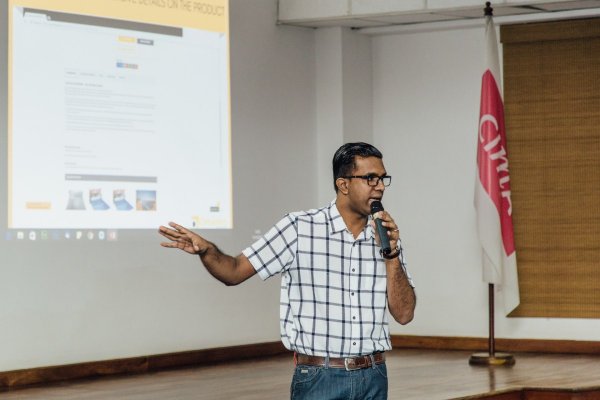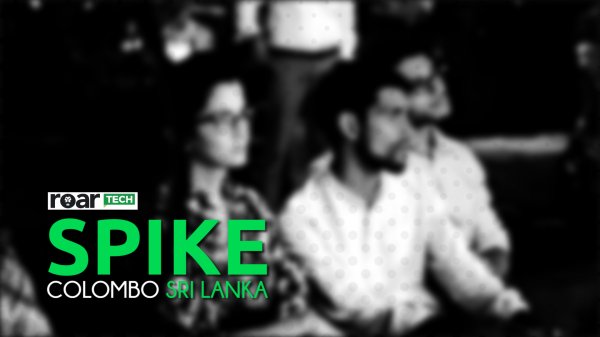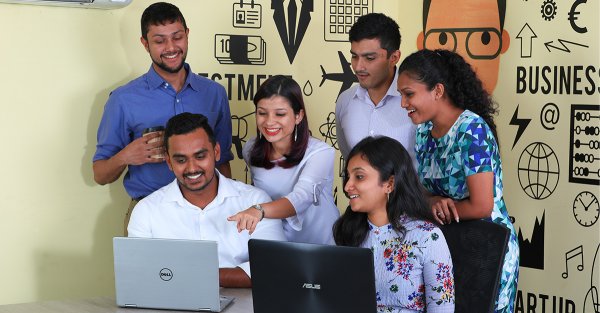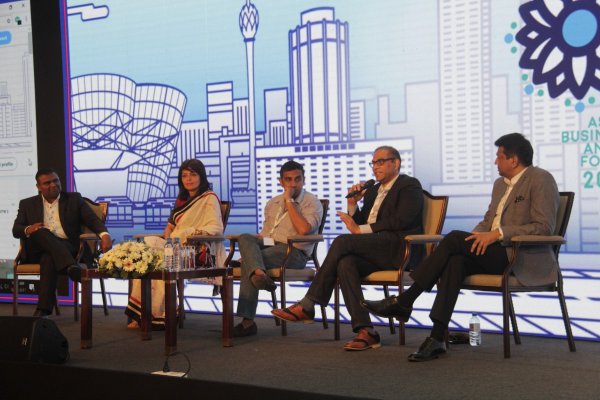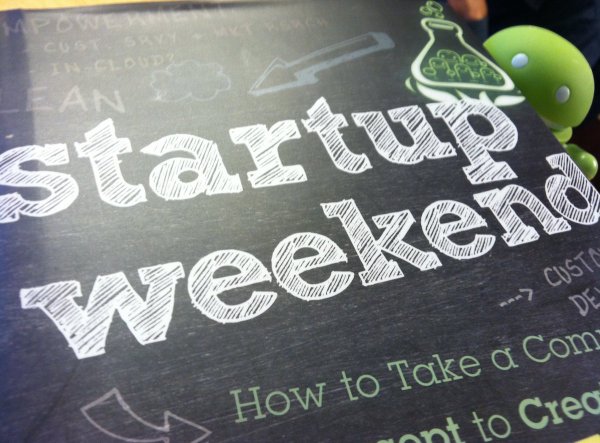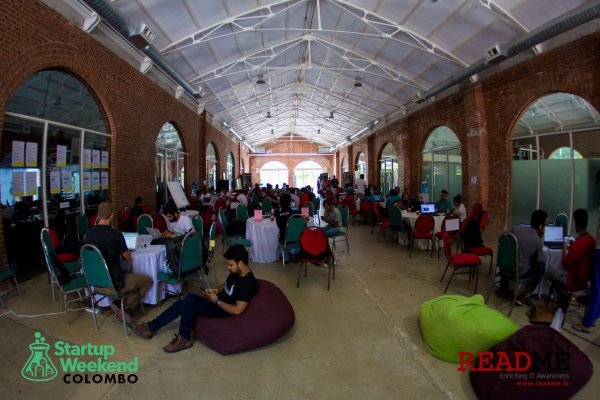
Last year, Google CEO Sundar Pichai noted that Sri Lanka had hosted one of the largest Google I/O extended events outside of the United States. This year’s event came close to topping that achievement with over 7,000 visitors for both the exhibition and the conference. Organised by Dialog Axiata, in partnership with the Google Developer Group Sri Lanka, the Google IO extended event was more than just announcements rolling in from the US-based tech giant. In fact, it was a tech extravaganza spanning two days and featuring companies, entrepreneurs and innovations from across the island. It was very much one of the largest tech events of the year.
The event was split into two separate sessions. The first was an exhibition where some of the top tech companies of the country set up stalls to talk about their work or to showcase their products. The exhibition was open to all. The second part of the event was the conference, which was an invitees-only event. Here, CEOs and tech leaders addressed the crowd, introducing brand new technology that their companies were working on, or describing the journeys that brought them there. It was also during the conference that the live stream from the Google I/O main event was projected onto a large display—so that the audience was able to view the google announcements in real time.
The event began mid-day on May 17 and ran till the early hours of the next morning, without a pause. It was well-attended, with thousands of students, undergrads, professionals and IT enthusiasts packing the hallways.
The Exhibition
The Sirimavo Bandaranayake Hall B was where the exhibition took place. It was packed wall-to-wall, with stalls run by some of Sri Lanka’s top tech companies and startups. There was plenty to interest everyone. Wow.lk’s stall sold electronics at discounts; Dialog had a huge gaming stall set up at one side with a screen the height of a wall; several other companies like WSO2, Hype Hash, Mogo Solutions, SenzMate, and Arimaz Digital, along with many others, had set up shop in the hall as well. Each stall had people crammed right up to the tables and it was hard getting access. It was elbow-room-only, and by late afternoon, there was a pretty long queue just to get into the hall.

The Dialog Gaming stall drew a lot of attention
What was nice to see, though, was the number of schools that brought students for the exhibition. The excitement on their faces was a testament to a bright future for Sri Lanka’s tech industry.
At the entrance to the hall, amid a collection of luxury cars, was the University of Moratuwa’s Formula Student racing car. School kids were lining up to take pictures with it.

The University of Moratuwa’s Formula Student car
What dominated the exhibition hall, however, was a circular arena boxed in by Perspex walls. On this raised platform, mini remote-controlled robots would fight to push each other off the edge. Fifty-five teams from universities and academies brought in their creations to battle each other for the top prize of Rs. 200,000. Chromium Collision, as it was called, probably garnered more attention than anything else at the exhibition.

The bots being prepared to compete

The winner gets the spotlight
Product Launches
The exhibition was also used as a platform to launch several new products and services to the public. At the press conference held that afternoon, Dialog announced a new IOT platform that they’d been developing for Sri Lanka. Dialog will be inviting developers to build applications on top of this platform in order to make IOT more accessible to the public. In addition, they also announced a service called “I Say You Do”, which would run on top of this platform and bring connectivity to devices inside Sri Lankan homes. Using this service, people can programme their connected products to act on simple instructions. For example, an air conditioner can be programmed to switch on automatically when the user is almost home. Using “I Say You Do”, a user can programme the application to check, using GPS, how close the user is to home. Once the user reaches a certain distance, this triggers the application to switch on the air conditioning. The programmable applications of this service are endless.

The Dialog press conference
At the exhibition, Dialog also showcased their new master control app called MyDialog. MyDialog lets users access and control all their Dialog services through one app. They can see at a glance their mobile balances, broadband balances, bill payments, news, Star Points, eZ Cash and a whole lot more. Through MyDialog, users can launch any other Dialog app if they needed to access a service.

The MyDialog app controls all your Dialog services
Dialog also featured their special deals site called Freezone. Through Dialog Freezone, users can perform tasks like filling out surveys or downloading apps and, in exchange, gain rewards like free data, call minutes or balance top-ups.

Dialog Freezone gives you free rewards
The Conference
The main event of the day, however, was the conference that took take place in the adjoining hall.
The conference was for pre-registered guests only, but it was still packed with more than a thousand people. In the hours before the live stream was scheduled to start, CEOs and tech leaders addressed the crowd, talking about innovation, connectivity, their companies and the industry.

The presenters take the stage
One of the speakers, Dr. Sanjeewa Weerawarana of WSO2, talked about their latest project—Ballerina. Ballerina is a new open source programming language that lets you write programmes by drawing diagrams, instead of typing hundreds of lines of code. Programming, he said, was evolving. Why could you not, for example, programme in Sinhalese? There would be challenges, especially when it comes to the syntax of different natural languages, but technology is progressing at a rate that may make this possible in the future.
Also taking the stage was Maxime Bayen, fund manager of the GSMA. The GSMA has an Ecosystem Accelerator Innovation Fund that provides select startups in Africa and Asia a grant to help scale their services. The startups have to be existing businesses, already earning revenue and focused on the Sharing Economy area, or developing services for Micro, Small and Medium Enterprises. Applications for the grant open in June.
There were many other speakers who gave the audience insights into the complexities of the tech industry, but it wasn’t all work and no play, either. Several entertainment acts were lined up to ease the crowd into the I/O keynote speech. From skits to DJs and live music, the stage was never quiet for long.
Google I/O Keynote

The I/O keynote live stream begins
At 10:00 a.m. San Francisco Time, the Google I/O keynote speech started streaming live worldwide, which meant that it was 10:30 p.m. in Sri Lankan time when the video was displayed on the LED wall. Despite the thousands of kilometres between Colombo and Silicon Valley, there were cheers as Sundar Pichai appeared on stage.
Here are the highlights of the Google I/O announcements:
- Android just keeps growing. Monthly active Android devices now exceed 2 billion.
- Using a technology called Google Lens, Google Assistant can use your smartphone camera to analyse the world around you. You can identify a flower, for instance, by pointing the camera at it.
- Google Assistant is now also available on the iPhone, extending its reach across platforms.
- Google Home can now act as a phone.
- Google Home also gets a host of other features, like controlling television streaming services, music streaming services and broadcasting data to the correct connected device, like a TV or smartphone—depending on which one you’re using.
- Google Photos has Suggested Sharing and Shared Libraries allowing families to collectively add images to a central location.
- Upcoming VR headsets will be standalone and will not need a smartphone or PC.
- Android O Beta becomes available.
- Android Go is a version of the Android OS that can be run on cheap smartphones which tend to have low hardware specs.
- A next-generation Tensor Processing Unit chip, specifically designed for machine learning, is being used by Google, making it faster and more efficient to build AI on Google’s platform. Google is making its cloud computing platform into a base for the creation of AI.
The Future
The tremendous attendance at this exhibition and conference bodes well for Sri Lanka. From busloads of school children to undergraduates to professionals to tech enthusiasts, there were a lot of people showing a vast amount of interest in the tech world. The game stalls were always full, the custom modded robots were great, and the stalls were packed with people asking questions about 3D printing, drones, artificial intelligence and entertainment.

Testing a bot before the match
If this event proved one thing, it’s that the tech enthusiasts of Sri Lanka are very much in tune with the events and trends happening around the world. Things are looking up for the future of Sri Lanka’s tech industry.
